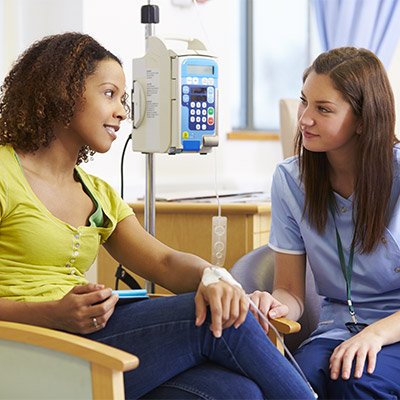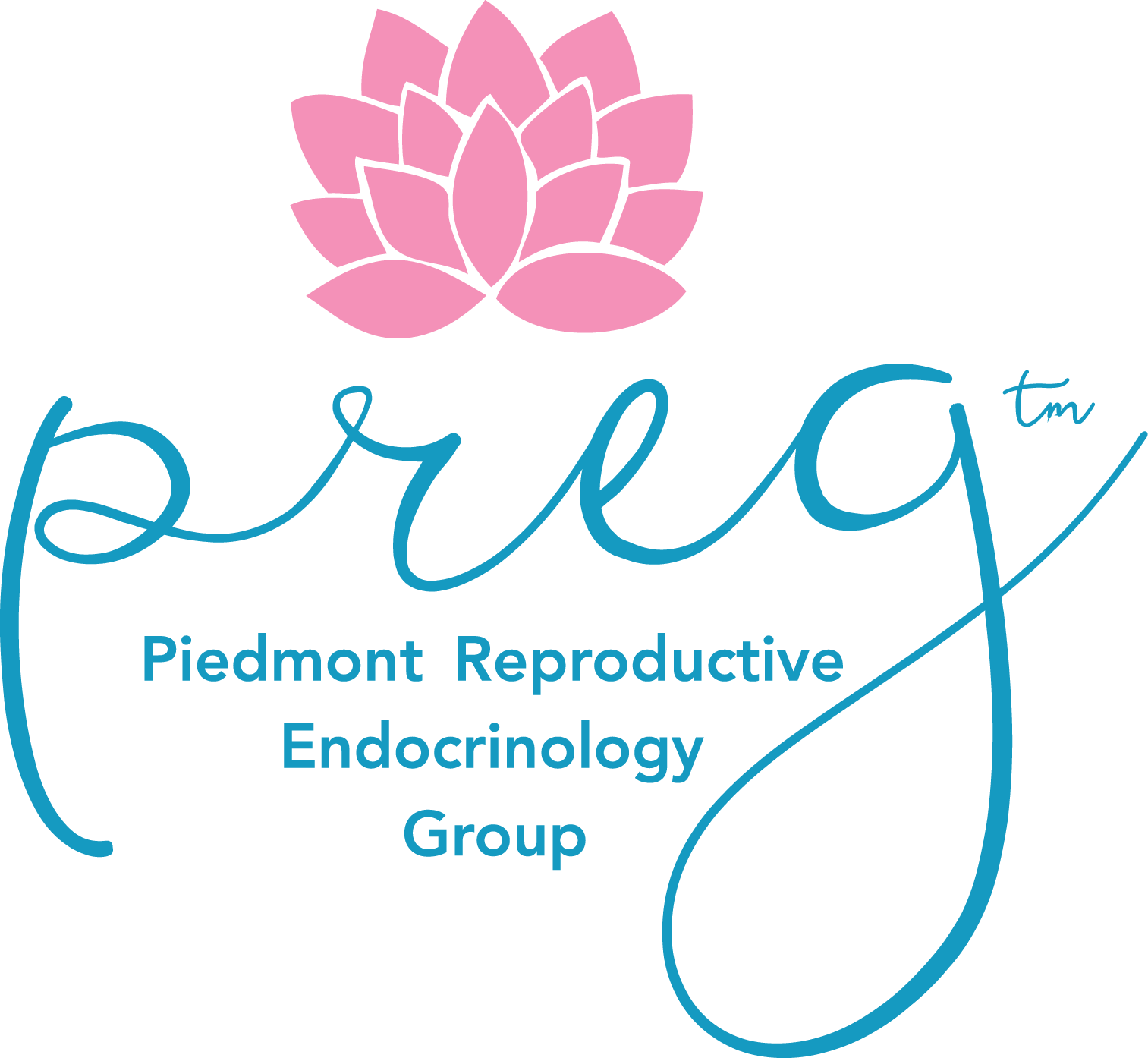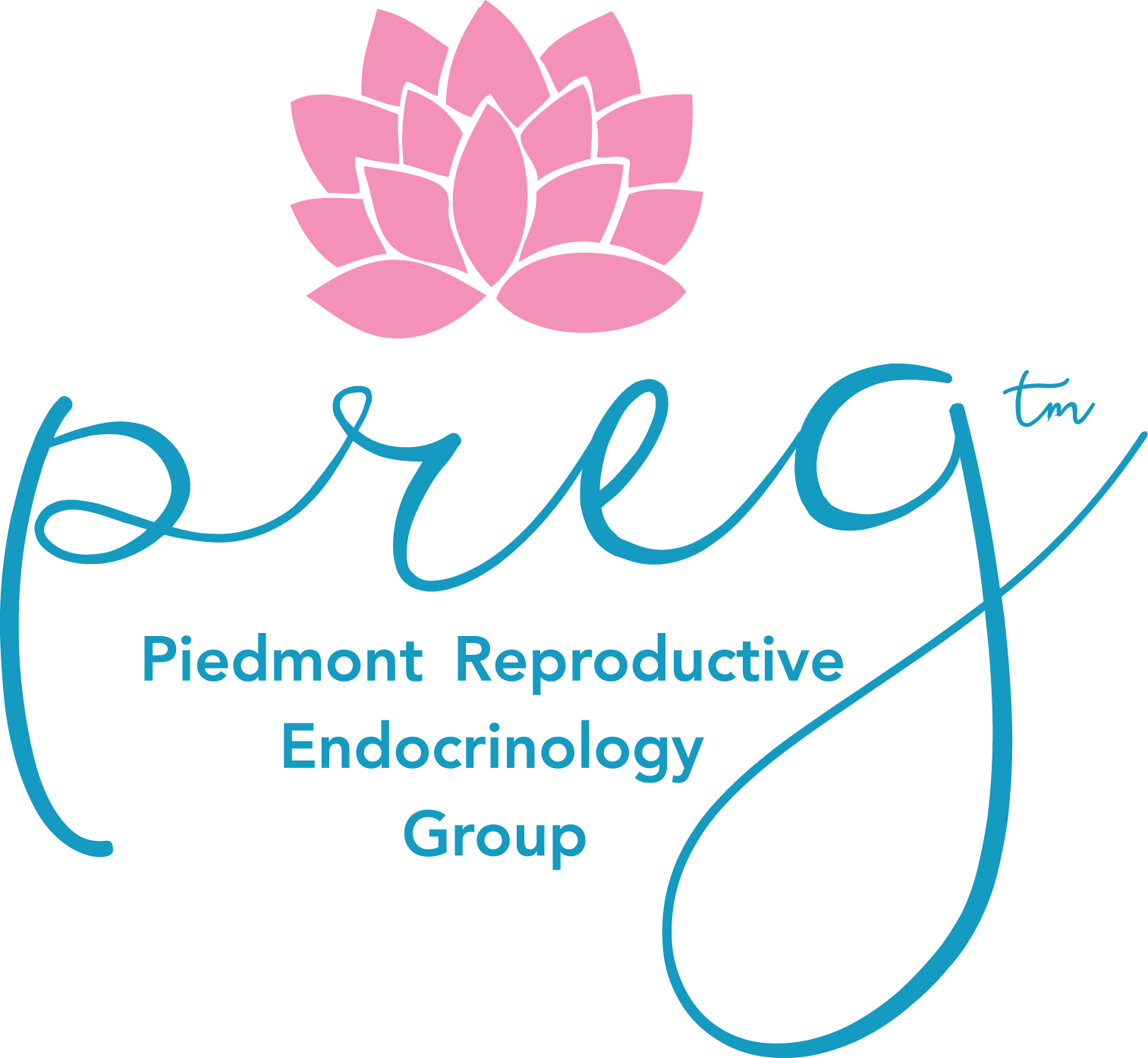PREG Resources
Infertility Testing and Work-Up
 At Piedmont Reproductive Endocrinology Group PREG) your basic infertility work-up will include:
At Piedmont Reproductive Endocrinology Group PREG) your basic infertility work-up will include:
Documentation of ovulation by either basal body temperature (BBT) charting, positive urine ovulation detector kits, ultrasound monitoring (follicle scans) or mid-luteal (cycle day 21) progesterone levels.
BBT should note a rise of greater than 1 degree over baseline after ovulation (usually between cycle day 12 and 16) that should stay elevated for at least 12 to 14 days.
A special basal body thermometer (purchased at your pharmacy) should be used to measure and chart your body temperature each morning upon awakening before eating or drinking.
Ovulation detector kits that are recommended are: ClearBlue, Easy Fertility Monitoring Kit, Ovuquik and First Response that should be available at your local pharmacy.
Can use ovulation predictor kits while taking Clomiphene, Letrozole or gonadotropins.
Fertility monitors can also be used but may be more expensive.
You should begin testing for ovulation around cycle day 11 usually around mid-morning to noon-time taking care not to check your first morning urine specimen.
Follicle scans or vaginal-probe ultrasounds to evaluate for development of mature follicle (egg sacs) are usually done on cycle day 12 to 14 and may be repeated in 1-3 days to evaluate for continuing growth.
Follicles are considered mature if they measure between 18 to 22 mm in diameter.
Fertility medications such as hCG or Pregnyl can be given as an intramuscular (IM) shot to boost or trigger ovulation to help time intercourse or intrauterine insemination (IUI).
Serum progesterone levels are usually checked around one week after ovulation in the mid-luteal phase (around cycle day 20-22) in a 28 day cycle if ovulation occurred around cycle day 14. Since cycles can vary, it is recommended to check for ovulation to schedule appropriately for progesterone levels.
Progesterone levels over 10 ng/ml are considered an adequate ovulation level.
Semen Analysis (SA), which should be performed in a qualified andrology lab for best evaluation of male infertility. Semen analysis should be looked at in a male to give the best indications of any sperm abnormalities. History of a pregnancy by the male does not necessarily equal a normal semen analysis. An adequately performed SA should include:
Sperm count (normal: >20 million sperm/ml semen).
Sperm motility (movement of sperm, usually >50% motility is normal)
Sperm morphology (shape and form of sperm, usually >15% normal forms is adequate). Normal sperm morphology is thought to be important for proper fertilization of the egg.
Assessment of Tubal Patency (tubes open) and Uterine Cavity, usually by an X-ray dye test called a hysterosalpingogram (HSG). See section for HSG instructions.
OTHER INFERTILITY TESTS MAY INCLUDE…
Hormonal Testing; cycle day 3 Follicle stimulating hormone (FSH) and Estradiol levels. Day 3 FSH and Estradiol levels can give an indication of how well the ovaries are working, especially in older women. Generally, levels of FSH should be <10 mIU/ml and Estradiol <50 pg/ml on cycle day 3 (depending on the reference lab). An elevated day 3 FSH/Estradiol level may signify that the ovary is struggling and showing signs of advanced ovarian aging.
Androgen (male hormone) Levels; testosterone, DHEAS (an adrenal male hormone), and lutenizing hormone (LH). An imbalance in male to female (Estradiol) hormone levels could affect ovulation. Suppression of androgens by either a short course (2-3 months) of oral contraceptive (birth control) pills or with Prednisone may be helpful.
Thyroid (Thyroid Stimulating Hormone, TSH) and Prolactin Levels; Abnormalities in either thyroid or prolactin levels can affect fertility and ovulation. Both can be corrected with medications.
Anti-Sperm Antibodies: antibodies against sperm that can interfere with the normal function of the sperm such as motility and fertilization. Antibodies can be from either the male (against his own sperm) or the female (against her partner’s sperm).
Sonohysterogram; an vaginal probe ultrasound test using warmed water and a small catheter to evaluate the inside of the uterine cavity to check for any abnormalities such as polyps (benign tissue growth), fibroids (benign uterine muscle tumor) or scar tissue.
Follicle Scans; vaginal probe ultrasound performed to evaluate the ovaries’ response to fertility medications and the development of follicles (egg sacs). Usually scheduled on cycle day 12 and may be repeated 2-3 days later if needed. Also used to evaluate the thickness of the uterine lining (endometrium). Generally, a endometrial thickness >8 mm is considered to be adequate for implantation and pregnancy. A persistently thin lining (<6 mm) could be detrimental for implantation of a developing embryo.
Clomiphene Citrate Challenge Test (CCCT); a series of blood tests to measure how well the ovary responds. Clomiphene Citrate (Clomid, Serophene) 100 mgs (two pills) is taken on cycle days 5 through 9. A cycle day 3 and a cycle day 10 FSH and Estradiol levels are obtained to evaluate the response of the ovary before and after stimulation by a fertility medication (Clomid).
Costs of above testing is from quoted charges by Piedmont Reproductive Endocrinology Group (PREG) and are subject to change and may differ from other labs or offices.
All medication costs quoted above are subject to change and can vary depending on place of purchase.
You are responsible for checking your insurance coverage for any of the above testing (diagnostic testing) and for any infertility treatment coverage. You will be responsible for any charges not covered by your insurance. Please contact one of our Financial Counselors for more assistance with your insurance and billing questions.


